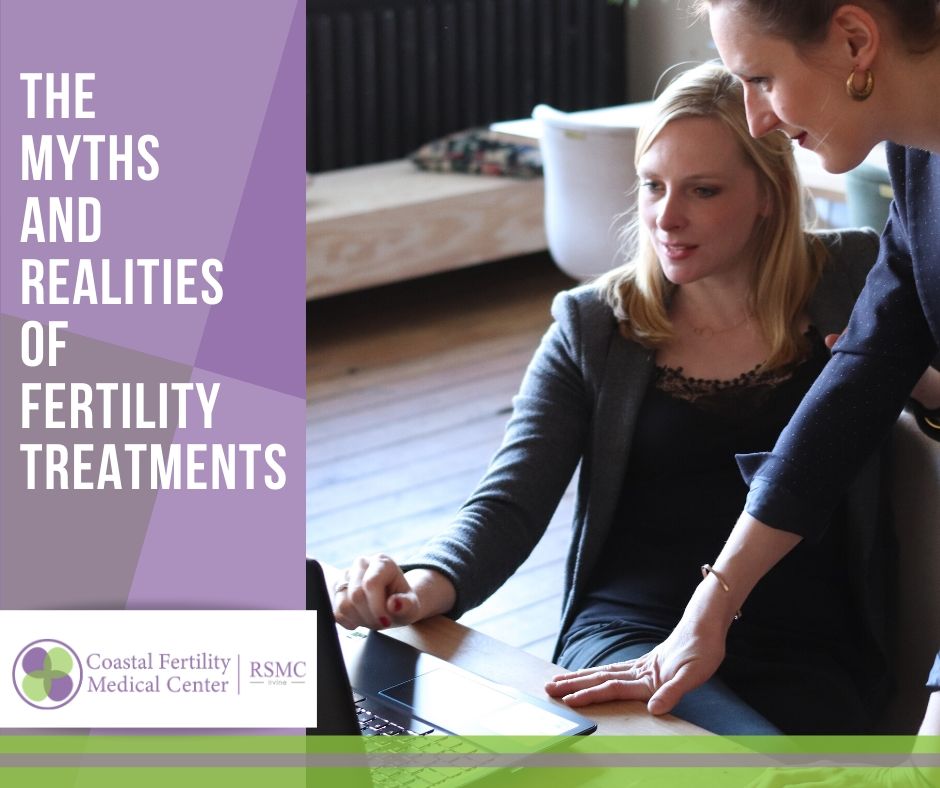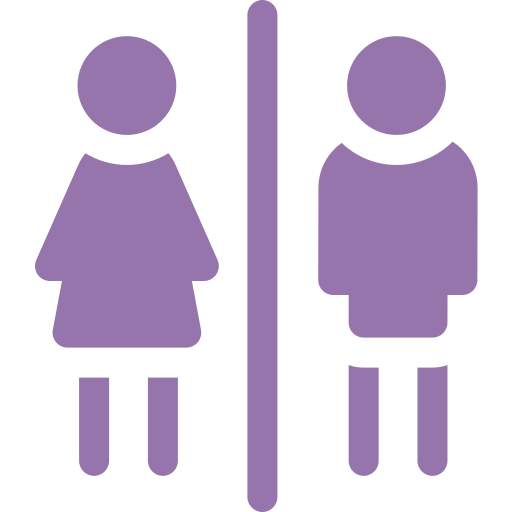About
Success
Treatment
Financial
Resources
Blog
Contact
Site Tools

The Myths and Realities of Fertility Treatments

IVF and other fertility treatments are getting more and more popular. Although, people still give in to a lot of myths regarding the subject. These myths can cause unwanted worry and stop many people from considering options that could potentially change their lives. The topic of infertility is such a dense subject matter; it is vital to know the facts. Let’s have a look.
Myth 1: You Will Have Two or More Babies!
Fact: While fertility treatments increase the probability of having multiple pregnancies, the statement is not entirely true. In fact, twins are more common in couples who became pregnant on their own. However, one cannot say the same for multiple births such as three or more babies. According to studies, only 15 percent of triplets and 7 percent of quadruplets pregnancy conception occurs naturally.
This increase in the chance of multiple pregnancies with assisted reproductive technology (ART) is due to the ovarian stimulation medication used during the fertility treatments. Only 5 to 7 percent of pregnancies conceived using oral fertility medications like clomiphene citrate results in twins.
Triplets or quadruplets rarely occur with these medications. Women treated with injectable fertility medications such as gonadotropins, end up with twins 15% of the time. Although, they end up with more than two babies with just 3 percent of the time.
IVF Treatment also raises the probability of having more than one baby. However, the chances of having multiple babies with IVF depends on the woman’s age. Women in their early twenties to mid-thirties are more likely to have twins compared to older women. Simply put, IVF patients below the age of 35 have a 25% chance of giving birth to twins.
With having said that, fertility treatments do increase the chance of multiple pregnancies. However, the rate is notably lower when compared to natural conception. Based on statistical data, the myth that you will for sure have two or more babies, is, in fact, a myth.
Myth 2: IVF Treatment Always Works No Matter the Circumstances
Fact: In a perfect world, nobody would have fertility issues. However, we do not live in an ideal world, and there is no full-proof solution to infertility. The sad truth is that no one can guarantee that fertility treatment will always work for everybody (not even IVF).
The IVF success rate depends on a number of factors. The most important of them is the age of the woman opting the treatment. Data collected from various fertility clinics in the US showed that women under 35 years of age have a 40% chance of having a successful IVF cycle. In contrast, women between 35 and 27 years of age have a 32% chance. The success rates become as low as 22% for women aged 38 to 40. This number reduces even more in women above 40 years old.
Another factor that determines the success rate of an IVF cycle is the number of embryos transferred into the patient’s womb. The more the number of embryos transferred, the higher the chances of a successful pregnancy. Consequently, the risk of multiple pregnancies also become the high. However the good news is that although not all who undergo IVF will achieve success, most of them will!
Myth 3: All Insurance Companies Cover Fertility Treatments
Fact: False! There are only 15 American states that require your insurance to cover IVF treatment and other fertility treatments. It is also essential to realize the amount of coverage varies from state to state.
While most insurance companies do cover certain stages of fertility treatments, what they include also differs from one company to the next. Some may only provide coverage for the cost of medical screening and initial testing needed to know the cause of infertility. Other policies, however, may have coverage that offers to take care of not only the cost of fertility treatments but the medications as well.
When considering fertility treatment, you need to study your insurance policy to know the degree at which you may be covered. Thankfully, most fertility clinics have professionals (financial advisors) who can help answer any questions about the infertility benefits included in your insurance policy.
Myth 4: IVF and IUI are The Only Options Available For Infertility
Fact: Couples struggling with infertility have plenty of options to choose from. Usually, treatment protocols are customized for each couple. This is because no two situations are identical.
Treatment plans are based on several factors, including age, basal metabolic index (BMI), and medical screening results. To explain, Below are some examples of alternative treatment options for infertility issues:
- IUI may be a good treatment option for men with lowered sperm motility
- Artificial insemination may not be needful at all, provided that medications can stimulate ovulation too.
- For women with blocked uterine tubes, surgery may be the best treatment option.
- A thyroid gland problem may be preventing a woman from ovulating. In this case, treatment with a thyroid hormone may be a requirement to restore regular ovulation and make pregnancy possible.
- More aggressive fertility treatment may be needed for a female patient who is approximately 40 years old or couples who have been battling infertility for many years.
These are just some of the treatments available for infertile patients. It is important to note that treatment plans are tailored to each individual situation. The fact that something does not work for someone does not mean it won’t work for you.
Myth 5: Children Born From ART Are Going to Have Congenital Birth Defects or Developmental Delays
Fact: Although we hope all children are born without any birth defects, sadly, that is not always the case. A study found that children conceived spontaneously (natural conception) have a 3 to 5% chance of being born with birth defects. Also persists a 1 to 2% chance of having developmental delays. Ovarian stimulation does indeed increase the chances of pregnancy-related complications due to multiple pregnancies.
However, IUI, done with the use of medications, does not seem to increase the risk of congenital birth defects or developmental delays any further.
Although a current debate, there are a ton of studies that have failed to show that babies born from IVF treatment are at a higher risk of birth defects. Another prominent question arises in regards to the baby’s birth weight, which also typically falls within the normal range.
All in all, there are a ton of ideas circulating around the issue of infertility. Some of which may sound utterly factual with personal experience or “solid” stories as evidence. The bottom line is that infertility and fertility treatment is a heavy subject with so many moving pieces.
Working with a reputed fertility clinic in San Diego like Coastal Fertility helps to weed out the facts from the fallacies. At Coastal Fertility, we pride ourselves on our patient’s success at achieving parenthood.
Myth 6: You are too old to have children at 40
Fact: As per the American Society for Reproductive Medicine (ASRM), the age cut-off for women in their late reproductive years is 55! This means that any woman below the age of 55 can still become pregnant. However, for most women above 40, the success rates are higher when donor eggs (another woman’s eggs) are used.
Myth 7: It is easy to conceive after 40
Fact: Becoming pregnant after the age of 40 is many things, but EASY is definitely not one of them! It usually takes advanced assisted reproductive technologies like IVF (in vitro fertilization), IUI (intrauterine insemination), fertility medications, or using donor eggs to conceive when you are in your forties. However, the womb does not age like the ovaries, so it may still function well into your early mid-fifties.
Myth 8: It’s not possible to become pregnant after 40
Fact: It is very much possible to conceive when you are above 40 years of age. Fertility clinics would be out of business if they were unable to help women above 40 conceive.
Myth 9: Expect for HIV, STIs can simply be treated with antibiotics
Fact: Even infections like chlamydia or gonorrhea that can be treated with antibiotics can cause irreversible damage to uterine tubes, which are essential when trying to conceive in the future.
Moreover, syphilis is becoming more common nowadays and is not usually detected in the early stages.
Finally, genital warts are a common STI that often requires long-term use of anti-viral medications.
Myth 10: It’s normal for women to experience pain during sex
Fact: Painful intercourse can be a sign of less lubrication, which is usually due to low levels of estrogen, which can be a symptom of an ovarian issue that can result in infertility. It has also been linked to a disease known as endometriosis- a medical condition in which cells that are normally found in the womb grow outside the uterus. This is also a common cause of fertility problems.
So, if you are having painful sex, or you are in doubt, consult a doctor. Don’t see painful intercourse as normal!
Myth 11: The vagina is not close to the mouth, so the foods you eat have no effect
Fact: The recommended foods for women who experience discomfort (vaginitis) or want to keep a healthy vagina are fresh cheeses, “healthy-fat” nuts such as almonds, vitamin-E supplement, yogurts containing live and active cultures, as well as, supplemental probiotics which are also good for digestive health.
If you would like information about fertility treatments or have any questions about your fertility, reach out to us at www.coastalfertility.com or call us at 949-726-0600 to schedule a consultation.
Related Post
-
What is Azoospermia – Types, Causes, Symptoms, and Treatments
-
15 Things Doctors Want Women in Their 30s to Know About Their Fertility
-
Ovarian Hyperstimulation Syndrome (OHSS) – Causes, Risks, and Treatments
-
This IVF Pregnancy Success Video Is Going Viral On TikTok, And It’s The Most Adorable Announcement
-
End your week with these happy and heartwarming stories and videos
-
Fertility clinic shares IVF pregnancy success with parents-to-be in adorable video
Halloween 2019
Each year, Coastal Fertility Medical Center’s staff hosts a fun get together for our former patients and their families. View more photos from our 28th annual Miracle Babies Halloween event!Popular Searches
- Orange County Fertility Clinic
- Irvine, California Fertility Center
- Coastal Fertility Medical Center
- Free Fertility Seminar, Irvine CA
- In Vitro Fertilization and ICSI
- Best Orange County Infertility Doctor
- Southern California Fertility Specialist
- PGD, PGS Orange County
- Egg Donation and Surrogacy
Address
Coastal Fertility Medical Center15500 Sand Canyon Avenue
Suite 100
Irvine, CA 92618
©2024 | Sitemap | HIPAA/Privacy | Disclaimer and Privacy Policy
News from our Top Doctors

Our fertility clinic focuses on helping you build your family regardless of your sexual orientation or the gender you choose to identify with. We are even taking further steps to make LGTB people feel more welcome at our fertility clinic. Each of our patient-facing staff goes through LGTB training to let family-building clinicians provide necessary support and make you feel highly welcome.

Coastal Fertility Medical Center offers one of the most advanced fertility treatments and is completely transparent regarding the costs of procedures and any other expenses that you may have to pay before commencing your treatment. This differentiates us from some fertility clinics that reduce prices before the signing of the contract but charge you extra later on. We make sure our patients are well aware of any possible extra pricing that may occur over the course of their treatment.

The infertility industry is currently segmented, with each service or treatment being handled by a different provider. Our all-inclusive model simplifies an otherwise complex and difficult process. We are here to revolutionize the infertility industry by offering a one-stop-service model to assist our patients through infertility challenges while reducing physical, emotional, and financial risks.

Our globally respected team of specialists are helping improve IVF technologies to enter into a generation of better outcomes for infertility. Although you’ll have a doctor guiding you, you are also going to benefit from the experience and insights of other doctors during case review collaboration meetings, which take place every week. So, you won’t just rely on the expertise of a specialist but benefit from the knowledge of many reputed fertility experts.

Our team specializes in difficult cases and help patients who may have been considered “hopeless” at other fertility clinics. Thanks to our personalized solutions, expertise, and internal collaboration, weare able to maximize pregnancy success rates that are well above the industry average, even in difficult infertility cases.

We know that every situation is different and that everyone requires different treatments. Unlike facilities that take “a one-size-fits-all” approach for all cases, our fertility specialists use more than 40 customized protocols to raise the chances of success. The customized approach even extends to our fertility laboratory. Our on-site lab director and his highly-experienced team nurture every embryo and egg to increase the odds of success of each cycle.

Coastal Fertility Medical Center offers one of the most advanced fertility treatments and is completely transparent regarding the costs of procedures and any other expenses that you may have to pay before commencing your treatment. This differentiates us from some fertility clinics that reduce prices before the signing of the contract but charge you extra later on. We make sure our patients are well aware of any possible extra pricing that may occur over the course of their treatment.
Thanks for Joining!
We will be sending new updates soon.
You’re all set!
Your new patient forms have been submitted and received. We look forward to seeing you at your appointment.
Send us a message, we’ll be happy to answer any questions!
Please complete the form so we can best serve and help you with your journey towards parenthood.
On Demand Seminar Registration
Following the Preimplantation Genetic Screening process, which helps ensure there are normal chromosome numbers and detects possible genetic disorders, the most healthy embryo(s) are selected to be implanted into your or your chosen surrogate’s womb. 2 weeks after the transfer of the embryo, your physician will conduct a final blood test to determine the level of hCG (human chorionic gonadotropin) in your body. Increased hCG levels usually indicate a positive pregnancy test.

For fertilization to take place, the collected egg and sperm are combined in a petri dish and cultured in an embryo incubator. This dish is closely watched to check whether any of the eggs have been fertilized. Once the egg is fertilized, it is referred to as an embryo or a blastocyst on the 5th day of development. Our in-house embryologist carefully nurtures every embryo to the right time, even if it means working outside the standard business operating hours. For instance: If an oocyte is not mature, our laboratory will wait for it to mature and then ICSI it at the right time.

The egg retrieval is a slightly invasive medical procedure that takes about 20 to 30 minutes. You will be given an anesthetic to make you sleep for the duration of the procedure. Using ultrasound technology, your doctor will harvest your eggs transvaginally with a small, hollow needle connected to an ultrasound probe. Once your eggs are collected, your partner’s semen or donor sperm you have pre-selected is used for fertilization. The sperm are washed and prepared, and the top-quality sperm extracted is used to fertilize the eggs.

Your doctor will create a customized medication schedule that contains information about the fertility medications and hormone injections you have to take. Medication and injections are taken to encourage your ovaries to mature a large number of eggs for fertilization. Since women don’t respond to fertility drugs and hormones the same way, personalized protocols are crucial to the IVF cycle success. At Coastal Fertility, we will monitor you closely, letting you understand the changes occurring in your body and keeping track of how your egg follicles are growing.

On-site consultations typicallyinclude a standard fertility evaluation, consisting of a physical examination, complementary follicular ultrasound, and testing to enable your doctor to know your present fertility status and draw up a treatment plan.

This consultation includes a detailed medical evaluation with a doctor. You and your physician will review your health records and have enough time to talk about your goals and get answers to your questions. We recommend that you jot down all your questions before the visit to allow you to make the best use of the time spent with your doctor.

Your Reproductive Endocrinologist will take all factors into consideration and create a comprehensive plan of care, otherwise known as the treatment plan. This plan will include treatment recommendations from the physician and enable your financial coordinator to make a precise quotation once you meet.

Our globally respected team of specialists are helping improve IVF technologies to enter into a generation of better outcomes for infertility. Although you’ll have a doctor guiding you, you are also going to benefit from the experience and insights of other doctors during case review collaboration meetings, which take place every week. So, you won’t just rely on the expertise of a specialist but benefit from the knowledge of many reputed fertility experts.

The infertility industry is currently segmented, with each service or treatment being handled by a different provider. Our all-inclusive model simplifies an otherwise complex and difficult process. We are here to revolutionize the infertility industry by offering a one-stop-service model to assist our patients through infertility challenges while reducing physical, emotional, and financial risks.

Our fertility clinic focuses on helping you build your family regardless of your sexual orientation or the gender you choose to identify with. We are even taking further steps to make LGTB people feel more welcome at our fertility clinic. Each of our patient-facing staff goes through LGTB training to let family-building clinicians provide necessary support and make you feel highly welcome.

We know that every situation is different and that everyone requires different treatments. Unlike facilities that take “a one-size-fits-all” approach for all cases, our fertility specialists use more than 40 customized protocols to raise the chances of success. The customized approach even extends to our fertility laboratory. Our on-site lab director and his highly-experienced team nurture every embryo and egg to increase the odds of success of each cycle.

Our team specializes in difficult cases and help patients who may have been considered “hopeless” at other fertility clinics. Thanks to our personalized solutions, expertise, and internal collaboration, weare able to maximize pregnancy success rates that are well above the industry average, even in difficult infertility cases.

Upon your arrival, you will check in with a Patient Care Coordinator. We will obtain your insurance information for benefits verification, a copy of your identification and take a picture for your electronic medical chart
Welcome to Coastal Fertility Family
Coastal Fertility is the leading provider of fertility solutions located in Orange County. Join us to get free updates on fertility news, treatments, infertility solutions and more.
Welcome to Coastal Fertility Family
Coastal Fertility is the leading provider of fertility solutions located in Orange County. Join us to get free updates on fertility news, treatments, infertility solutions and more.





































